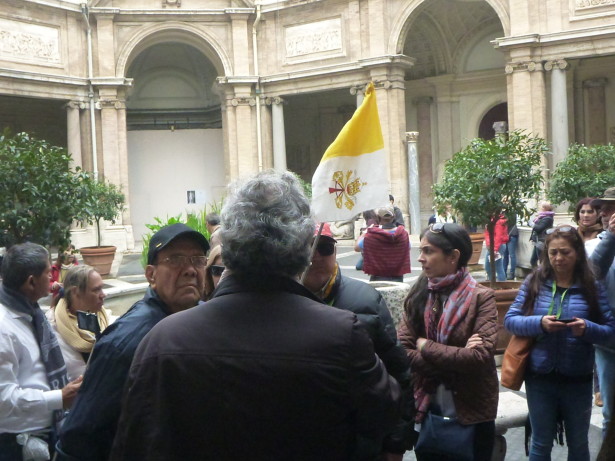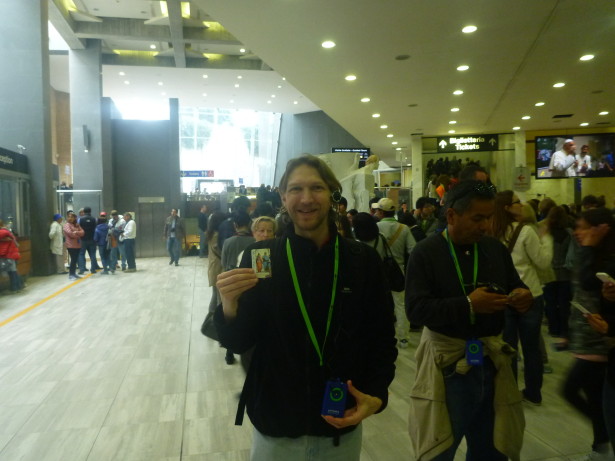The Vatican Museums is one of the most visited tourist attractions in the world. It is located in Vatican City and contains a vast collection of art and artifacts that span thousands of years. To fully enjoy the Vatican Museums experience, visitors need to understand the ticketing system and know some interesting facts about the museums. This article provides all the necessary information for anyone planning to visit the Vatican Museums.
The Vatican Museums was founded by Pope Julius II in the early 16th century. He wanted to display the vast collection of art and artifacts that were acquired by his predecessors. Over the years, the collection grew in size and importance, and the museums were expanded to accommodate the new acquisitions.
The Importance of the Vatican Museums
The Vatican Museums is not just a collection of art and artifacts. It is a symbol of the Catholic Church’s commitment to preserving culture and history. The museums are also a source of revenue for the Vatican City, which is an independent city-state located within Rome.
The Vatican Museums Collections
The Vatican Museums contain a vast collection of art and artifacts that span thousands of years. Some of the most important collections include:
Classical Antiquities
The Classical Antiquities collection includes ancient Greek and Roman sculptures and artifacts. Some of the highlights of this collection include the Laocoön and His Sons statue and the Apollo Belvedere.
Egyptian Museum
The Egyptian Museum contains a vast collection of Egyptian artifacts, including mummies, sarcophagi, and hieroglyphs. One of the most famous exhibits in this collection is the statue of the Egyptian goddess Isis.
Pio Clementino Museum
The Pio Clementino Museum contains a collection of classical sculptures and artifacts. Some of the most famous exhibits in this collection include the Belvedere Torso and the statue of Hercules.
Gallery of the Candelabra
The Gallery of the Candelabra is a long corridor lined with large marble candelabra. The walls of the gallery are adorned with ancient Roman reliefs and frescoes.
Gallery of Tapestries
The Gallery of Tapestries is a long corridor lined with tapestries that depict scenes from the Bible. The tapestries were woven in Brussels in the 16th century.
Gallery of Maps
The Gallery of Maps is a long corridor lined with maps that depict the Italian regions and cities during the Renaissance period. The maps were commissioned by Pope Gregory XIII in the late 16th century.
Raphael Rooms
The Raphael Rooms are a series of four rooms that were decorated by the Italian Renaissance artist Raphael and his assistants. The rooms are adorned with frescoes that depict scenes from the Bible and classical mythology.
Sistine Chapel
The Sistine Chapel is the most famous exhibit in the Vatican Museums. It is a masterpiece of Renaissance art and architecture, and it is known for its ceiling painted by Michelangelo. The ceiling depicts scenes from the Bible, including the Creation of Adam and the Last Judgment.
Vatican Museums Tickets
Visitors can purchase tickets to the Vatican Museums online, which allows them to skip the long lines. The museums also offer guided tours, which are highly recommended for anyone who wants to learn more about the collections and the history of the museums.
There are also skip-the-line tickets available for those who do not want to wait in line. These tickets are more expensive than regular Vatican Museums tickets, but they allow visitors to enter the museums directly without waiting in line.
Tips for Visiting the Vatican Museums
When visiting the Vatican Museums, it is important to dress appropriately. Visitors are required to cover their shoulders and knees, and they are not allowed to wear hats or sunglasses inside the museums.
Food and drink are not allowed inside the museums, so visitors should plan to eat before or after their visit. Photography is allowed in most areas of the museums, but flash photography is prohibited.
Guided tours are highly recommended for anyone who wants to learn more about the collections and the history of the museums. There are also audio guides available for those who prefer to explore on their own.
Vatican Museums Facts
The Vatican Museums have some interesting Vatican Museums facts that visitors may not know about. Here are a few:
Secret Passages
The Vatican Museums have several secret passages that were used by the popes and their guests to move around the museums without being seen by the public.
Popes and their Collections
Many popes over the years have contributed to the Vatican Museums collections. Pope Julius II, who founded the museums, was an avid collector of art and artifacts.
Restoration Work
The Vatican Museums have a team of experts who are responsible for restoring and preserving the art and artifacts in the museums. The restoration work is ongoing and requires a great deal of care and expertise.
Museums at Night
The Vatican Museums offer night tours during the summer months. These tours allow visitors to explore the museums after hours and see the exhibits in a different light.
Pope Francis and the Vatican Museums
Pope Francis is a strong supporter of the Vatican Museums. He has made several changes to the museums, including opening up areas that were previously closed to the public.
Conclusion
The Vatican Museums is a must-visit for anyone who loves art and history. With its vast collection of art and artifacts, it is one of the most important cultural institutions in the world. By understanding the ticketing system and knowing some interesting facts about the museums, visitors can fully enjoy their experience at the Vatican Museums.


